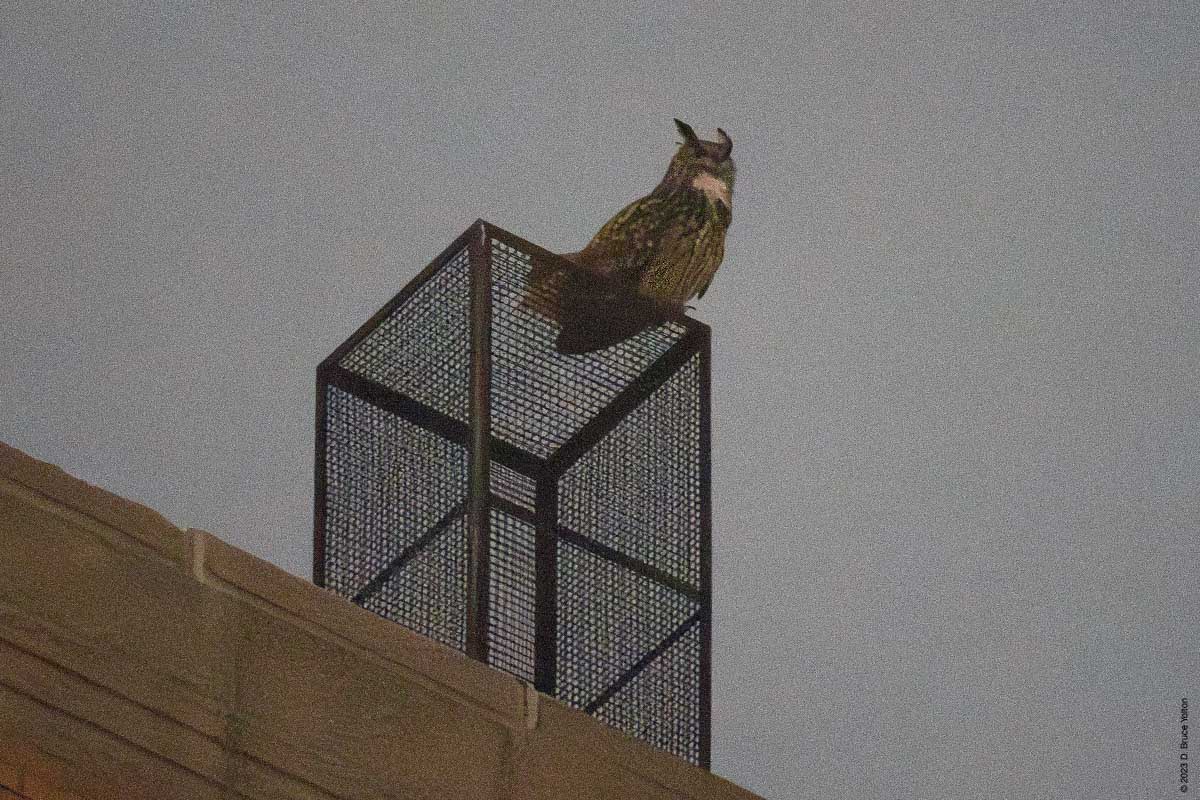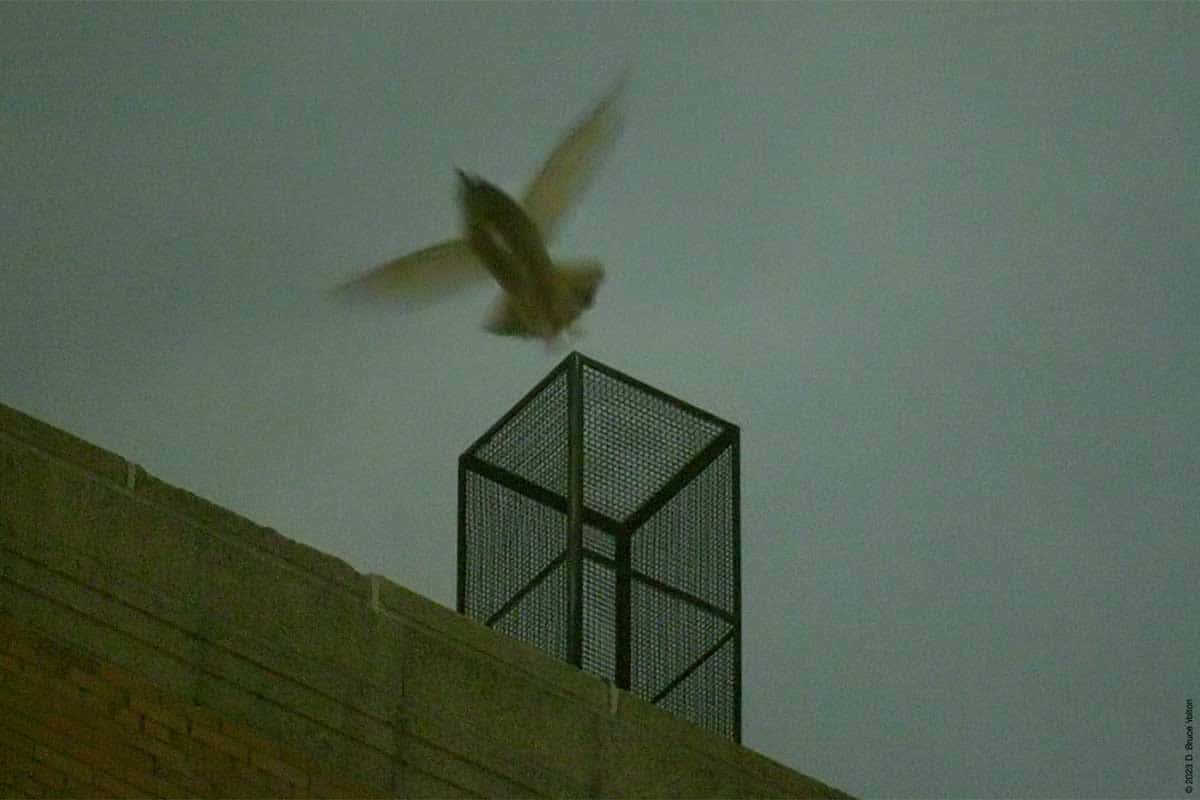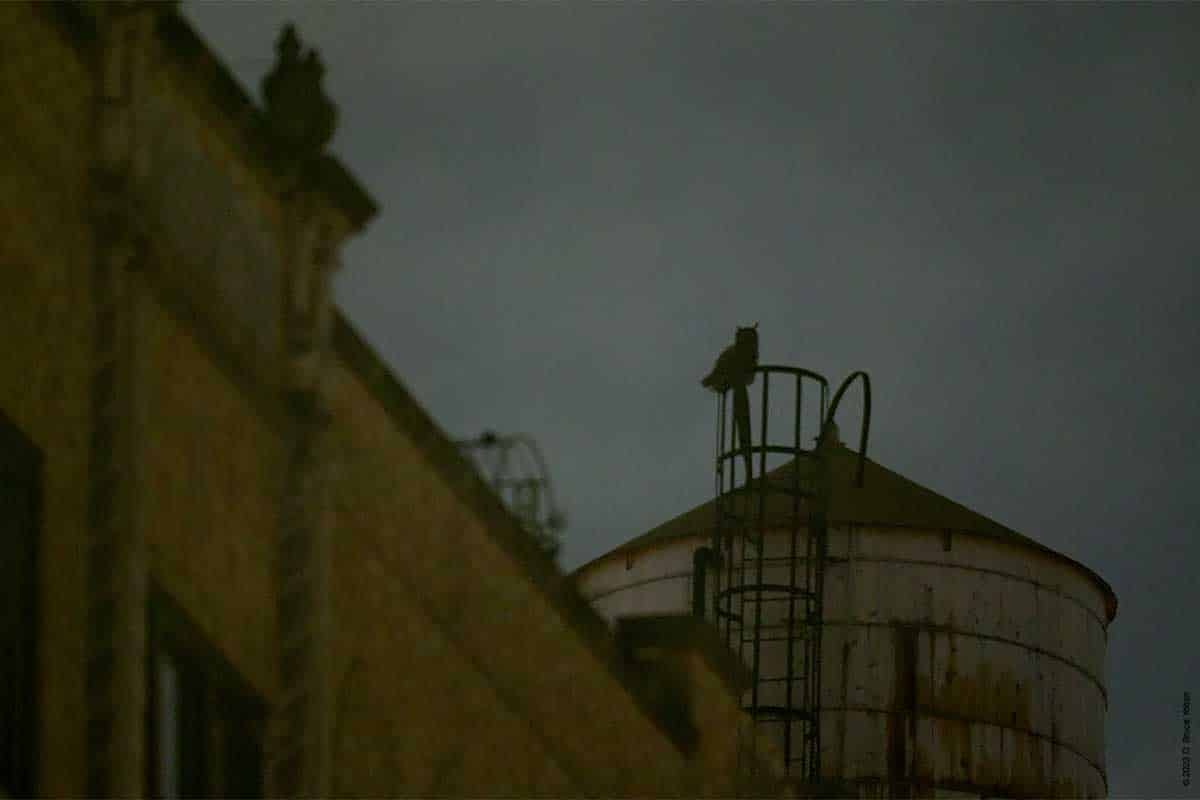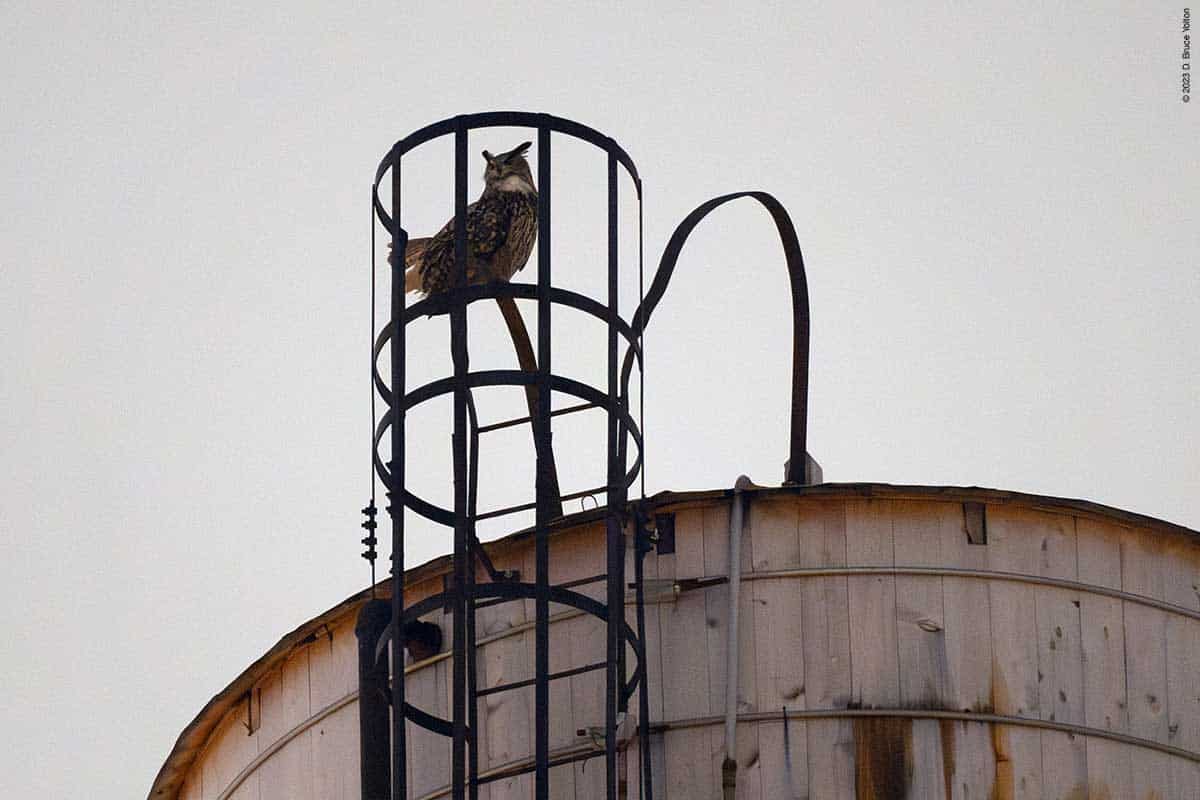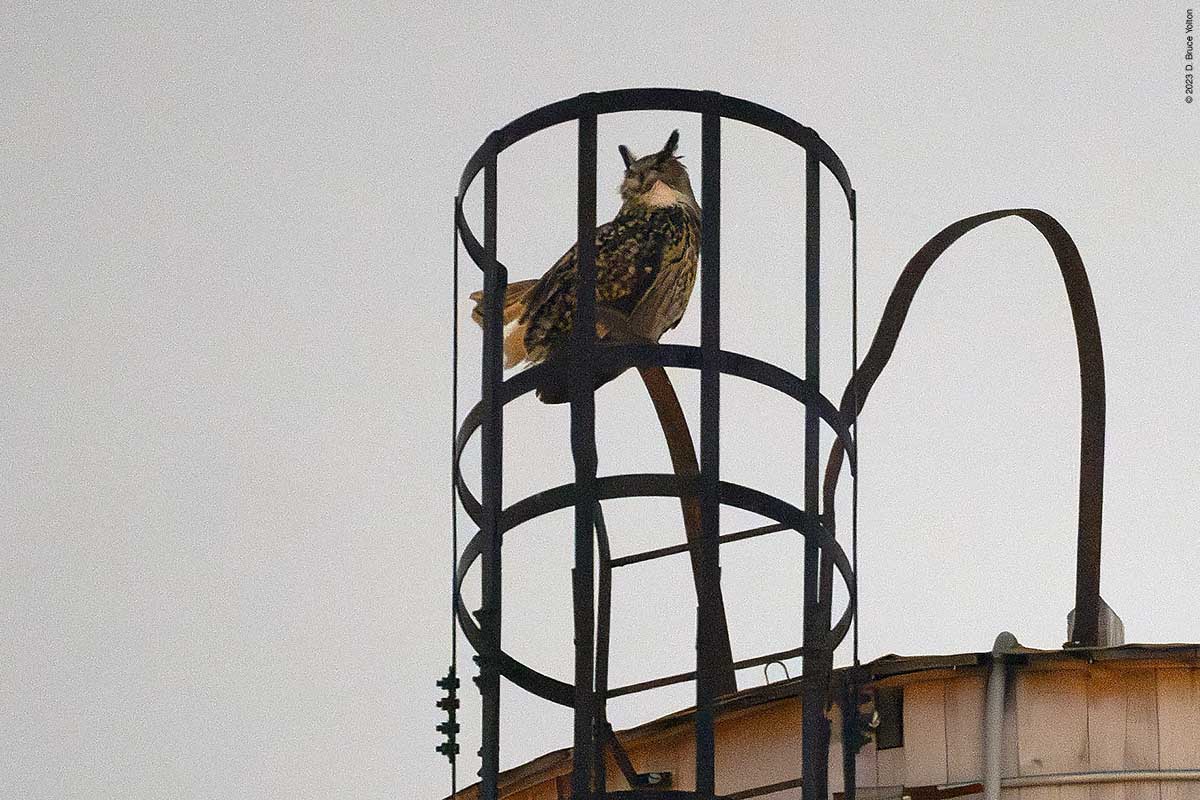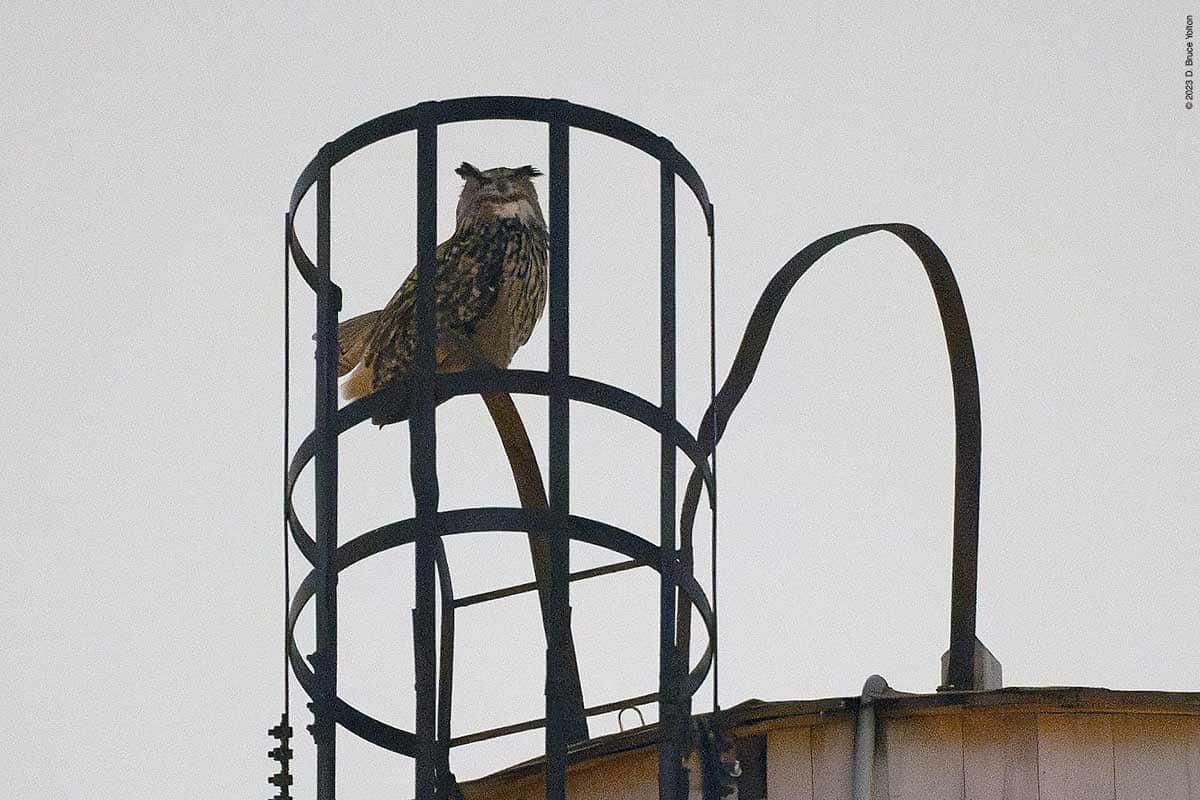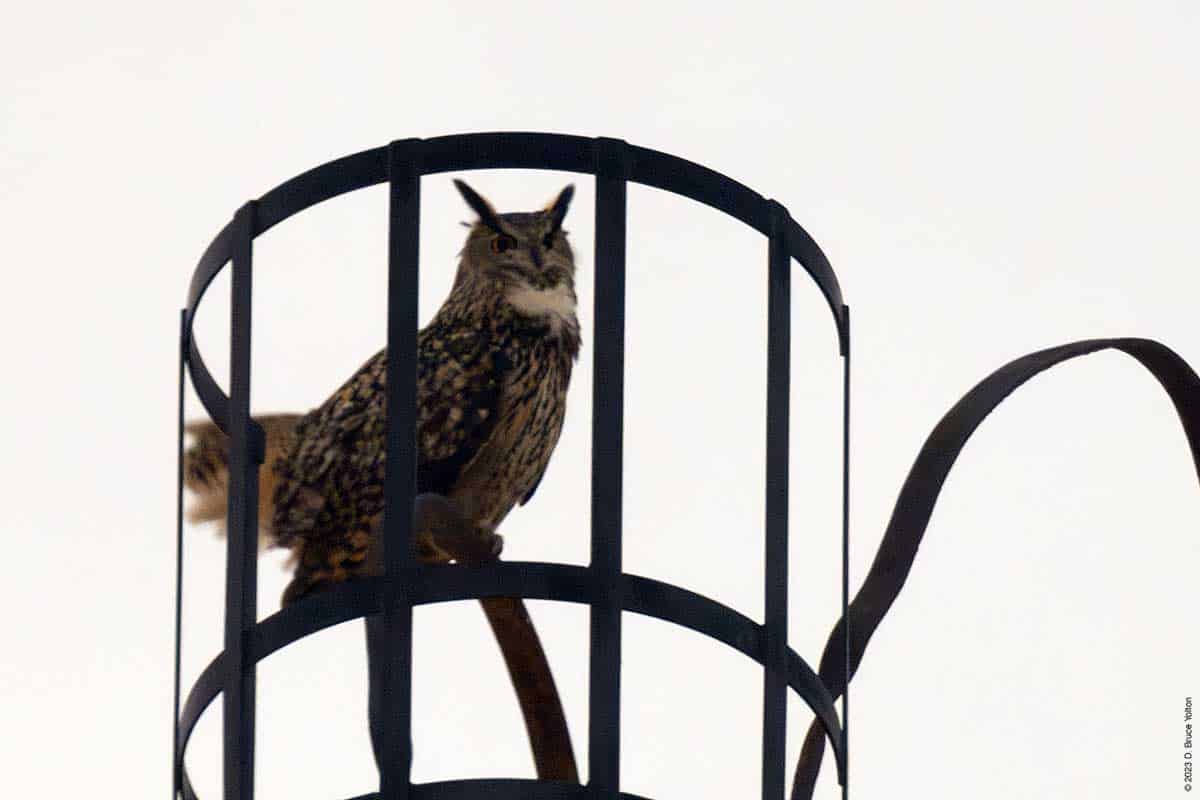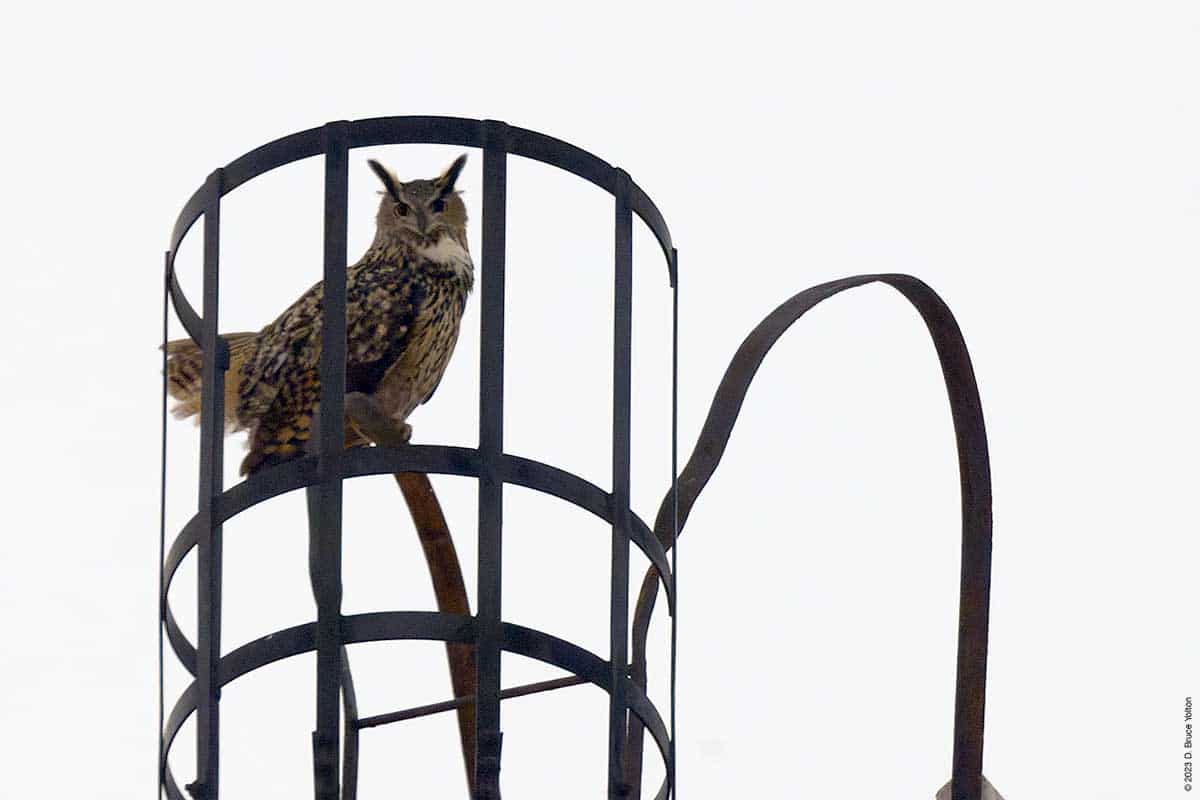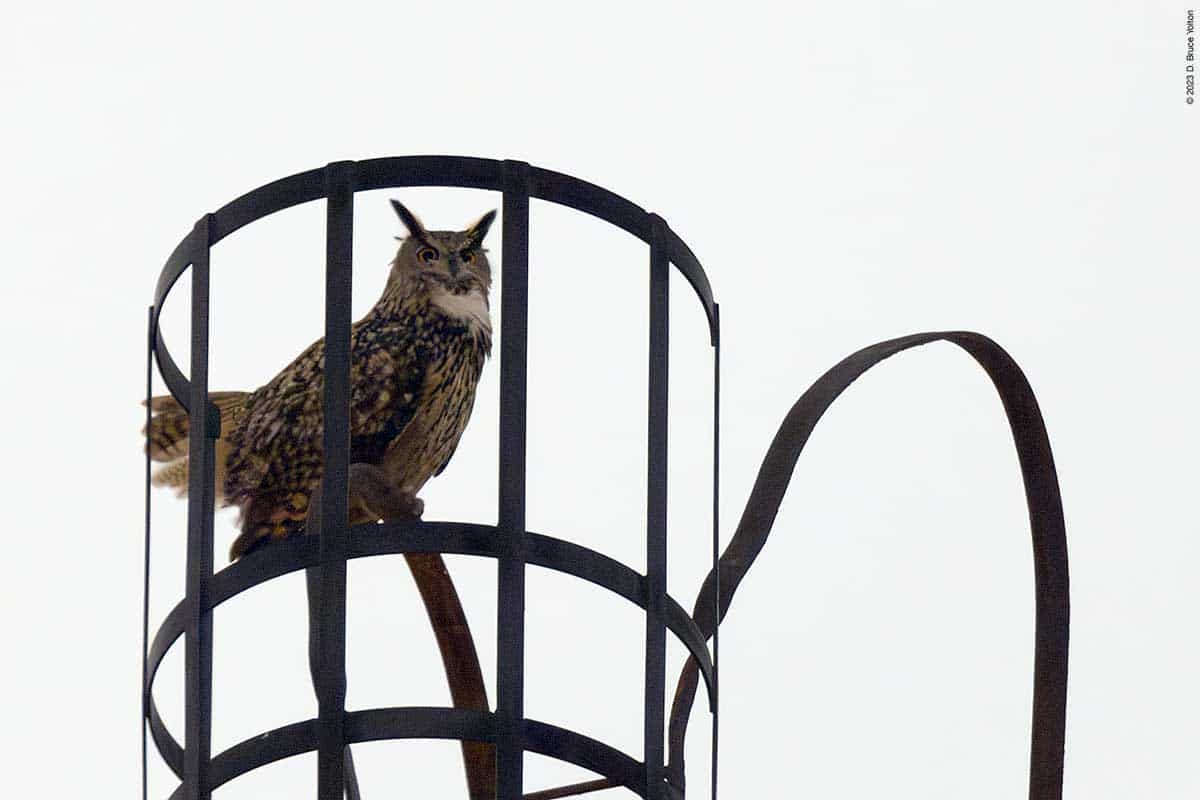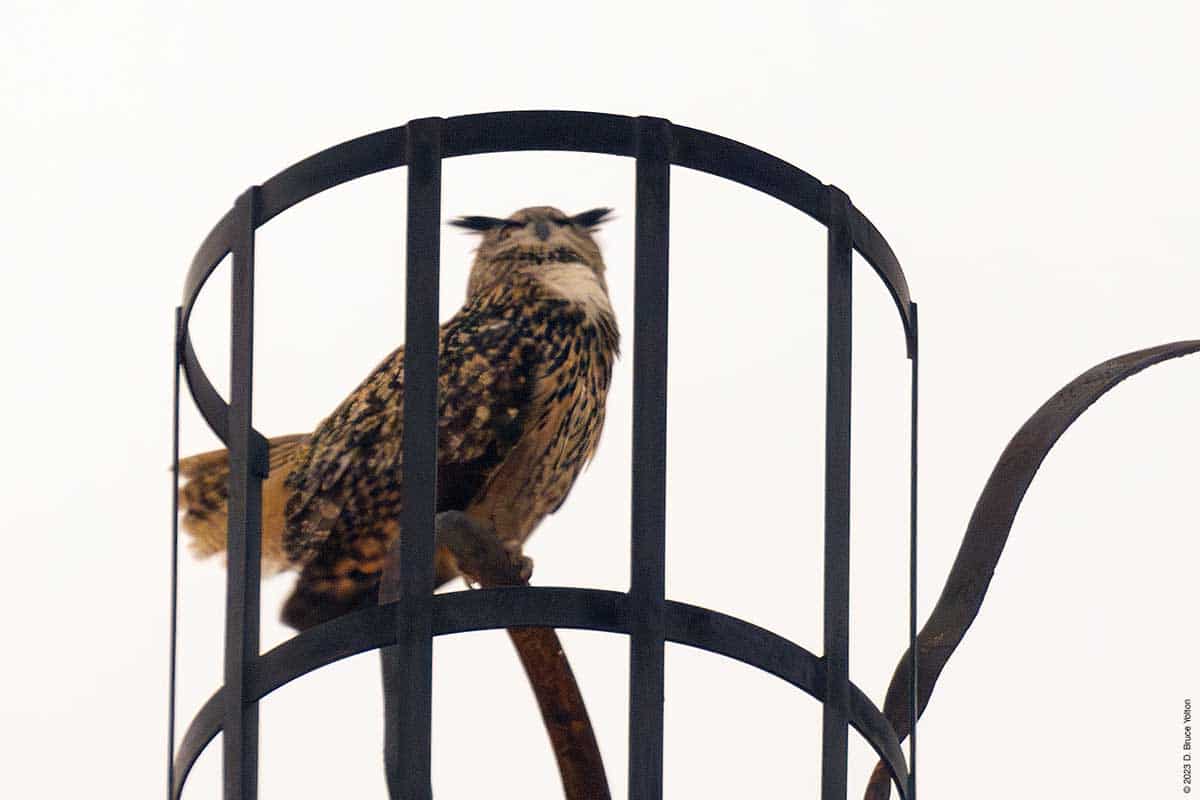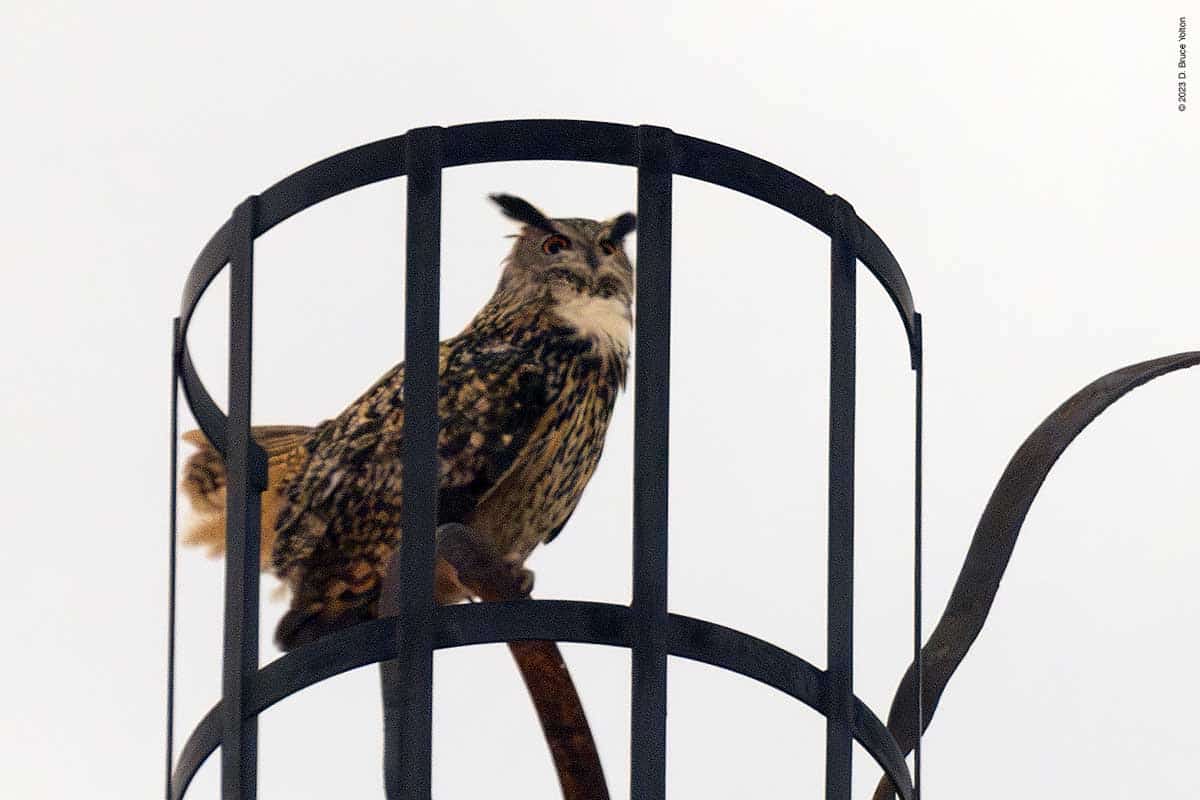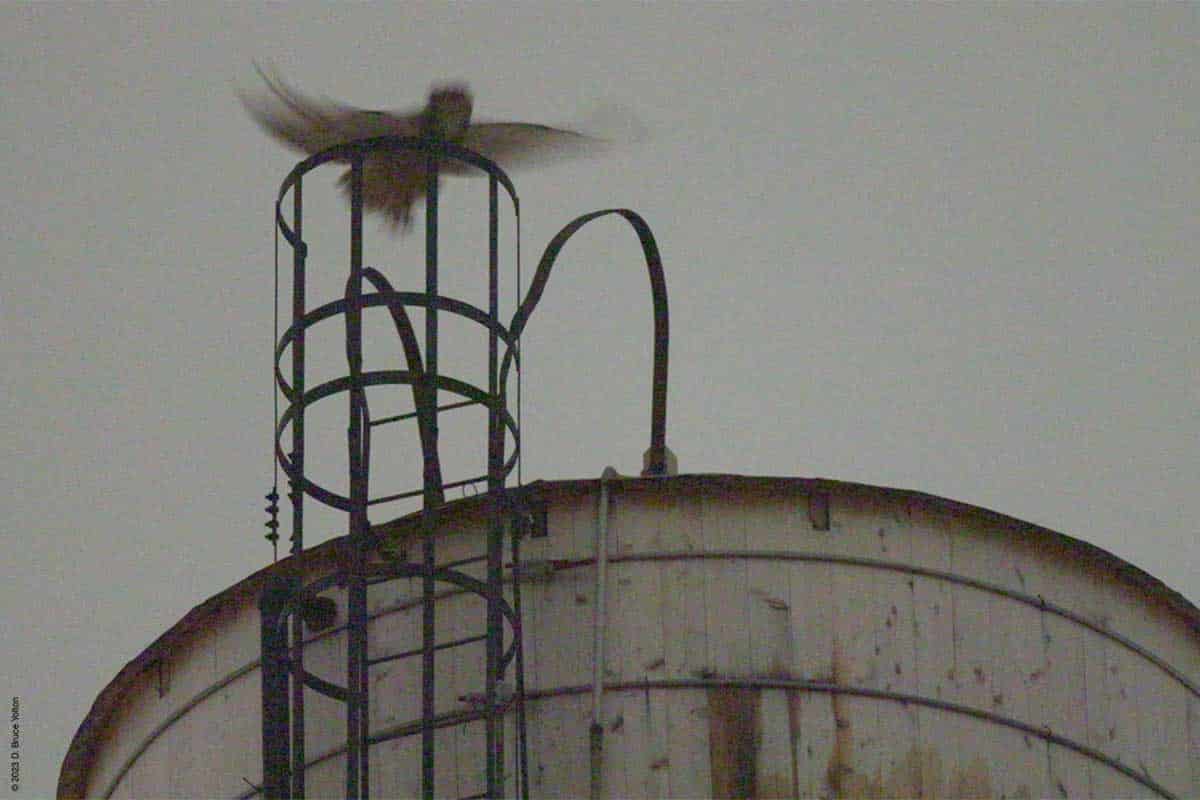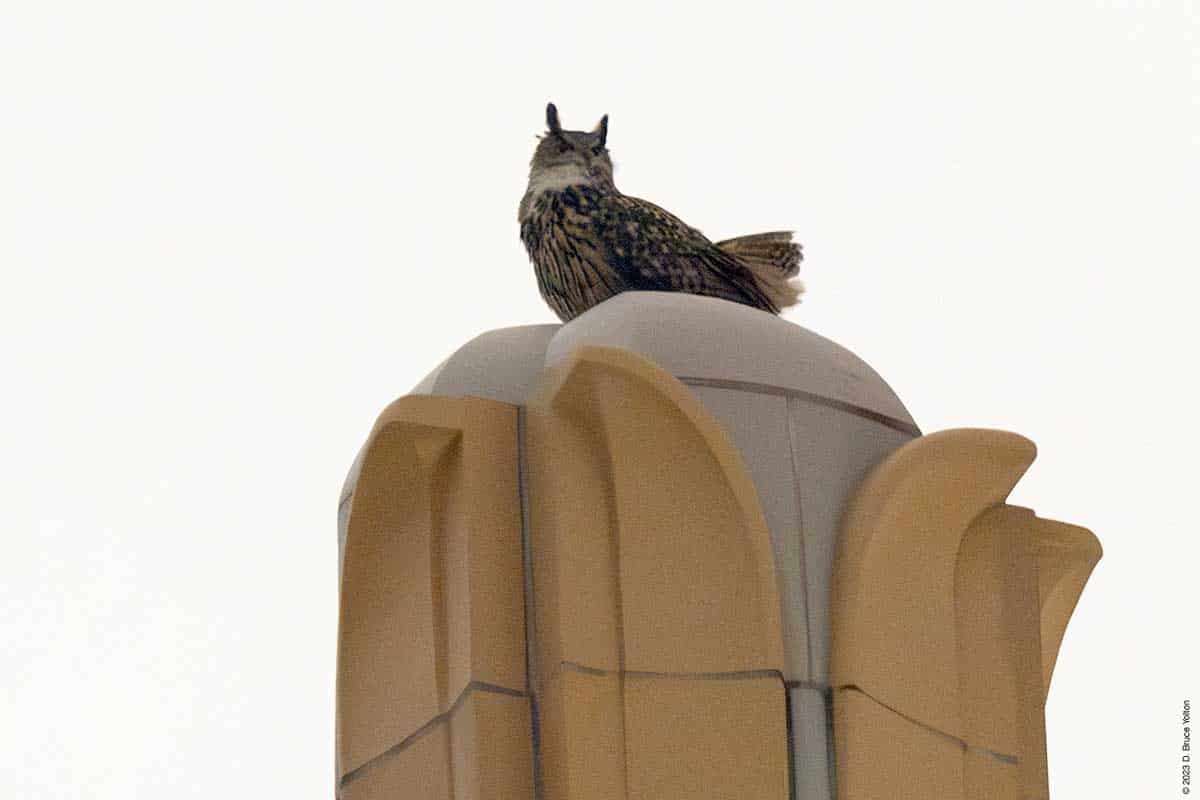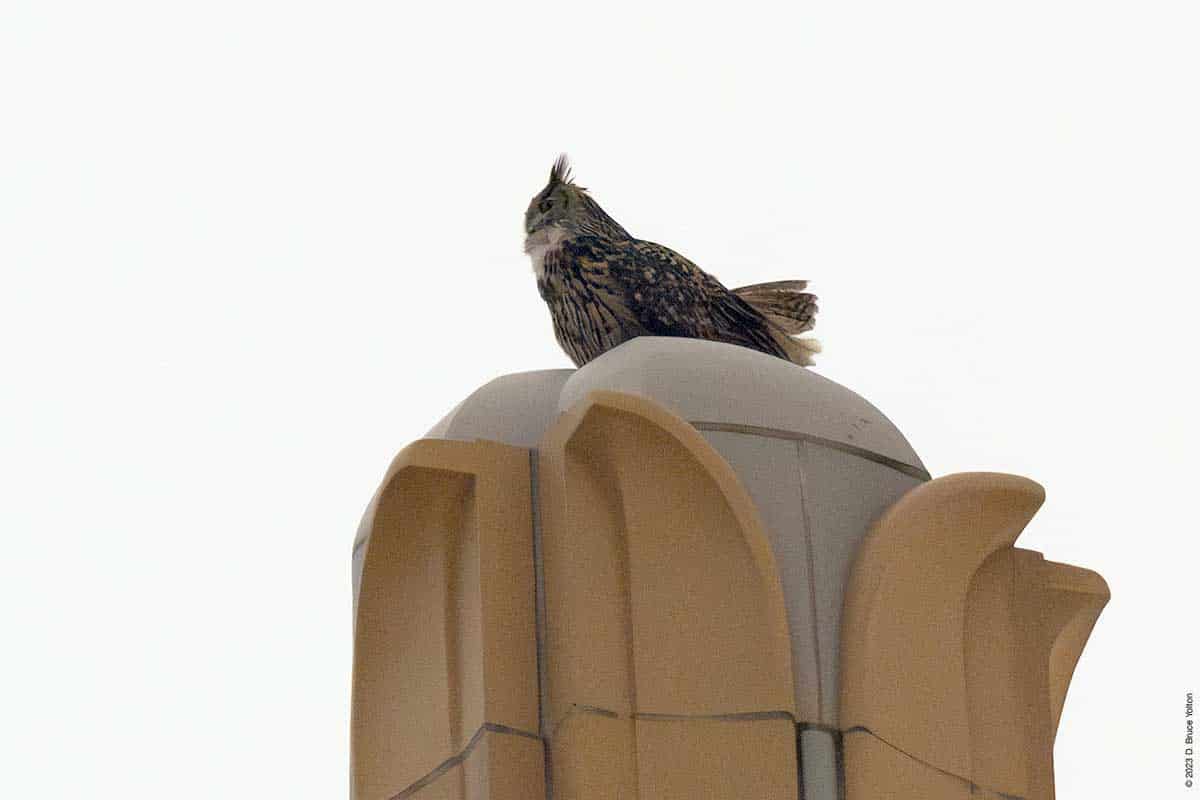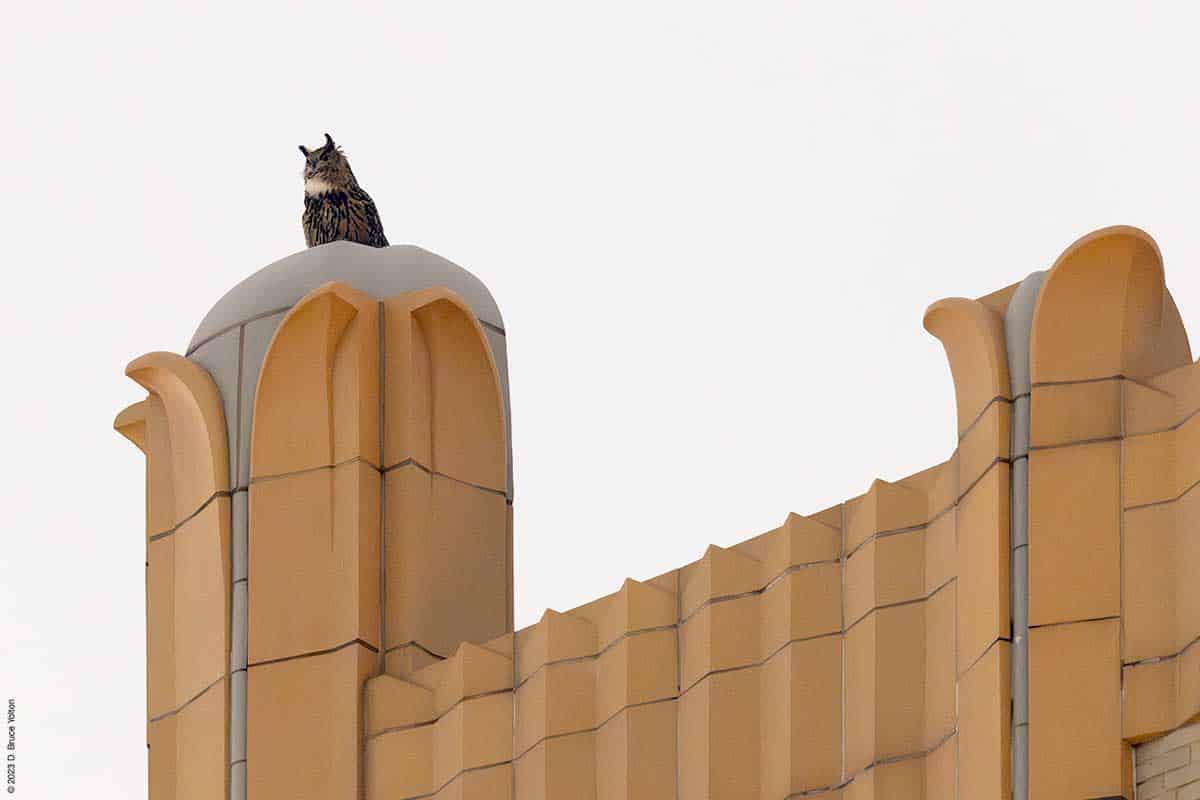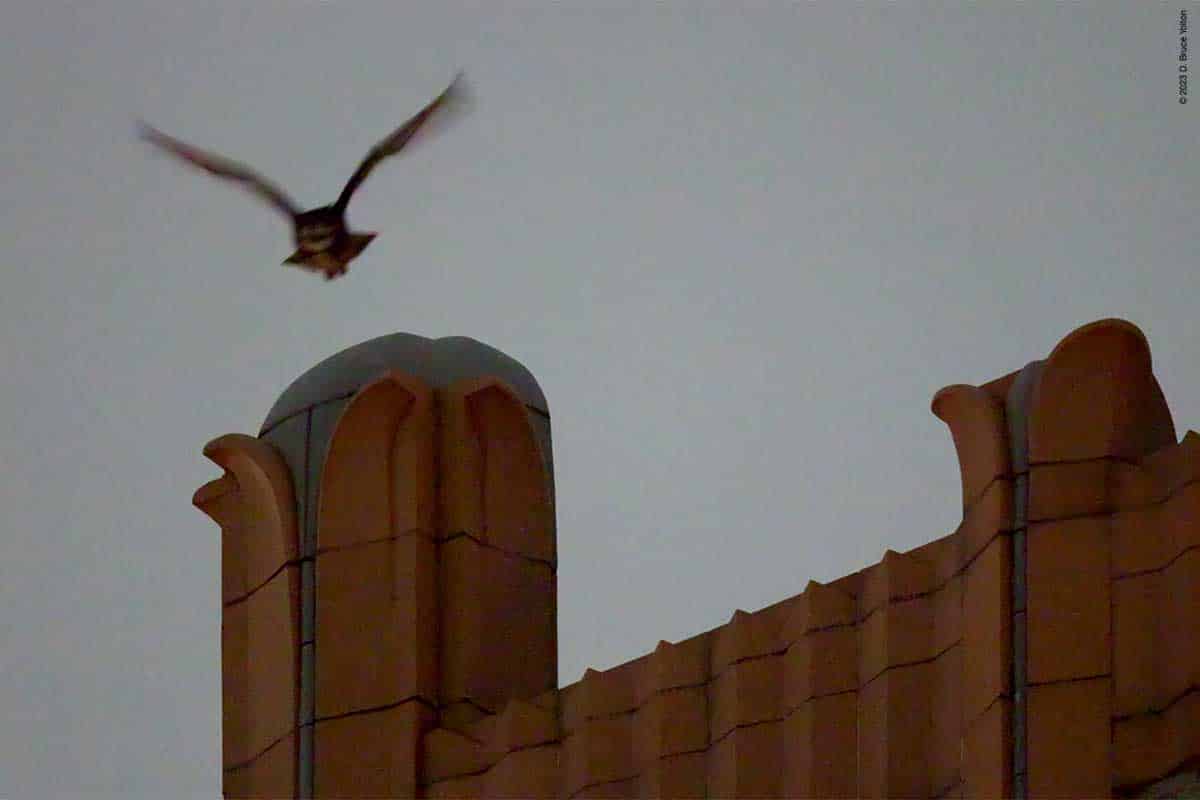Flaco has had quite the adventure since I last saw him on the Lower East Side on November 9th. He has been seen in a variety of places, the East Village, on a few buildings on Fifth Avenue, back in two familiar roosts in Central Park, and then roosting in at least three locations on the Upper West Side in the ’80s. (I was away on vacation, so I missed seeing any of this.)
After he left Central Park, social media had some crazy reasons for why he left Central Park after two days. The most incredulous was someone defending their posting of his roost locations, by claiming that people don’t bother Flaco, and he must have moved because of American Crows and Hawks. While Flaco most likely didn’t leave Central Park because of people watching him, he does get annoyed by some observers and the standard owl etiquette rules should be honored. The world is full of bad actors, and it makes sense to not advertise the location of a sleeping owl.
Flaco has also held his ground with crows and hawks. I doubt he ever switched roosts because of them. It was suggested that he left his roosts at the Tennis Courts, because of a hawk. But, you could easily make the case that his temporary use of trees north of the Tennis Courts was a way of engaging a Red-tailed Hawk, which he did push away. And after he was successful, he returned to his favorite American Elm.
The reasons Flaco is now exploring Manhattan aren’t entirely clear. He’s a feral bird on the wrong continent, so this is unchartered territory. He certainly wasn’t expected to say in Central Park forever and I’m surprised he didn’t do more exploring earlier in the year.
He has discovered at least two things in the last month. One is that he can hoot from tall buildings and secondly that he can roost in quiet gardens, backyards and at the rear of buildings.
Dedicated Flaco watchers have considered a number of possibilities for why Flaco chose to move in November.
- As the days got shorter, he may be responding to instinctual pressures to establish a territory and secure an appropriate nesting location. This naturally occurs in the late fall and early winter. (Eurasian Eagle-Owls don’t build nests. They use cliffs, take over other raptor nests or can even nest on the ground.)
- He’s checking for other owls, which would be both competitive males or potential mates.
- His roosting locations were beginning to lose their leaves, and were offering less cover than in the summer. He could simply have been looking for a more protected place to roost.
It’s hard to say which is the correct answer or answers. There could be other facters in play as well.
His moving outside of the park does increase his risks of dying. Rodenticides are a major problem for urban owls, especially for Flaco as he continues to have a rodent only diet. So, as he explores there is some concern among those following him.
Tonight was a joy, after so many weeks. It was great to see Flaco after so long, ten months after his release from the zoo.
I started the night watching a block near the American Museum of Natural History. He has been reported roosting there at least four times. I didn’t see him fly out, and I don’t think the five or six other observers saw him either.
I went out to dinner and a friend texted me that she heard Flaco but couldn’t find him around 7 pm. I didn’t see the text until after I got home. So, my evening with Flaco started around 8:30. I missed the crosstown bus, so I walked along the southern end of the Reservoir west. When I got closer to Central Park West, I heard Flaco. After not seeing him for weeks, just hearing him got my heart racing. I hadn’t seen social media reports of his being on 5 West 86th Street, but using sound found him on my own. It was so wonderful to see him.
He then flew to a water tower on the south side of 86th Street closer to Columbus Avenue, 40 West 86th Street. In my photographs, he looks to be in a cage, but he was on a crossbar outside of a ladder with a safety cage. He hooted and hooted. It was impossible to get clean recording of him with the traffic noise, but you could hear him very clearly from the street. Folks out walking their dogs, said he had been heard on Friday night was well.
Flaco then went southeast to a building between 84th and 85th streets, 241 Central Park West. He made one brief hop from one corner to another on the top tower. He hooted for a long time before flying off and gliding to the Great Lawn of Central Park. When we got there he was on a backstop, but quickly flew northeast. He flew low as though he was going to catch something on the lawn, but he couldn’t be relocated. At this point, it was way after Midnight, so the four of us looking for him left before the park closed at 1 am.
We assumed that his returning to the park meant he was most likely hunting there. This was comforting, as the rodents within the park have a much lower risk of being poisoned.
